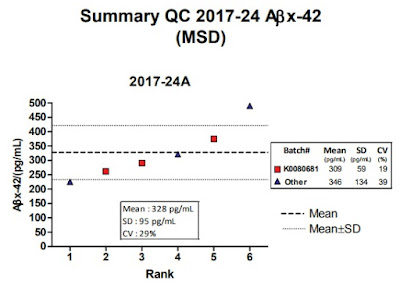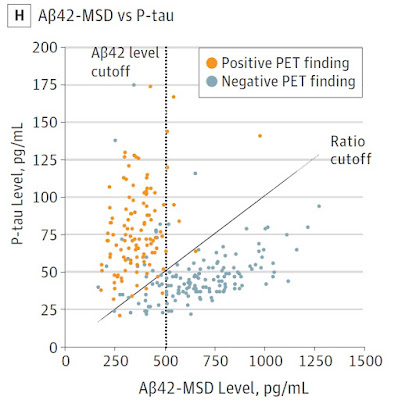超靈敏電化學發光免疫分析技術 Electrochemiluminescence (ECL)_組織均質液樣品
組織勻質液樣品,如使用Western Blot、ELISA容易出現以下問題:
(1)樣本用量較大,珍貴樣品用量不足。
(2)樣品基質複雜,容易導致實驗結果差異大;尤其是WB再現性差,CV差異遠大於
20%,往往要做一份樣品要測3重複。
(3)一些高含量的蛋白質,超過WB/ELISA偵測上限,訊號過強,需要重新測試實驗條件。
(4)一些低含量的蛋白質,低於WB/ELISA偵測下限,檢測不到,無計可施。
(5)WB時間長,步驟多,常見問題和常見解決方案多,遇到問題,解決起來繁瑣耗時。相對的,若使用MSD 超靈敏電化學發光免疫分析技術系統可克服上述問題:
(1)10 - 20%的樣品用量。
(2)CV在20% 以內,一份樣品重複2次,或者不重複也可。
(3)MSD(Meso Scale Discovery)偵測範圍廣,容易一次性檢測出不同含量的蛋白質。
(5)多篇SCI文獻報導MSD(Meso Scale Discovery)和WB的資料趨勢一致,而且有
更高的樣品檢出率。
(6)AKT, MAPK, 細胞凋亡,EGFR 等訊息傳導可使用一個試劑盒檢測。(點擊連結,可查看試劑組清單)
(7)組織勻質液樣品的處理,MSD建議如下:
Tissue Homogenates with MSD Assays
This is a very general protocol for tissue homogenates that has worked well on ourplatform. The tissue pulverization technique described below is a sonicator butyou can use a tissue grinder or an alternate tool. Some scientists use MSD lysis buffer to generate homogenates while others have their own formulation(helpful FAQs also given below). If you have a low amount of protein inyour sample, a small amount of carrier protein like 1%BSA may help.
● Weigh tissue, keeping it frozen on dry ice as much as possible.
● Use 75mg tissue /0.5ml ice cold lysis buffer
● Using probe sonicator set at 40% amplitude, sonicate tissue3-30sec bursts. Keep samples on ice. Do one sonication, put thesample on ice, do the first sonication for all samples, then come back for thesecond sonication etc. Alternately, use a beaker with ice in it and place thetube with the tissue into the ice, follow same sonication protocol ensuringthat sample remains very cold.
● Rotate sonicated samples for 30 minutes at 4C.
● Centrifuge samples for 10 minutes at 20,000 xg.
● Carefully remove supernatant, discard pellet
● Aliquot and freeze at -80°C.
You could also test out adding double (2X) the amount of phosphatase and protease inhibitors to 1X MSD Tris Lysis Buffer (or other similar lysis buffer) based onsome customer feedback we have received.
If you want to use an alternate lysis buffer, these are some things to keep inmind:
Q:
|
Can I denature the cell lysates?
|
A:
|
Yes, ionic detergents or urea can be used to denature proteins, however these reagents must be diluted before adding the sample to the MSD plate in order to avoid denaturing antibodies. Ionic detergents should be diluted to 0.1% or less and urea should be diluted to 1 M or less.
|
Q:
|
What other lysis buffers have been used with MSD assays?
|
A:
|
Various modified RIPA buffers with low concentrations of ionic detergents and urea-based lysis buffers have successfully been used in the assays. The MSD Lysis Buffer is optimal for many assays; however any buffer that is compatible with traditional ELISA should be suitable for use in MSD assays.
|
Q:
|
Should I avoid any reagents in my lysis buffer?
|
A:
|
High concentrations of ionic detergents (> 0.1%), urea (> 1 M), and other protein denaturants should be avoided. These constituents can be used if they are subsequently diluted prior to adding the sample to the MSD plate (so as to prevent denaturation of the antibodies).
|
Q:
|
Can the assays be used with tissue lysates?
|
A:
|
Yes, brain tissue homogenates, liver homogenates, homogenates from Matrigel plugs, and various other sample types have been used in MSD Phosphoprotein Assays
|
To dilute the samples, you can use the protocol that’s in the Product Insert of theassay.










留言
張貼留言